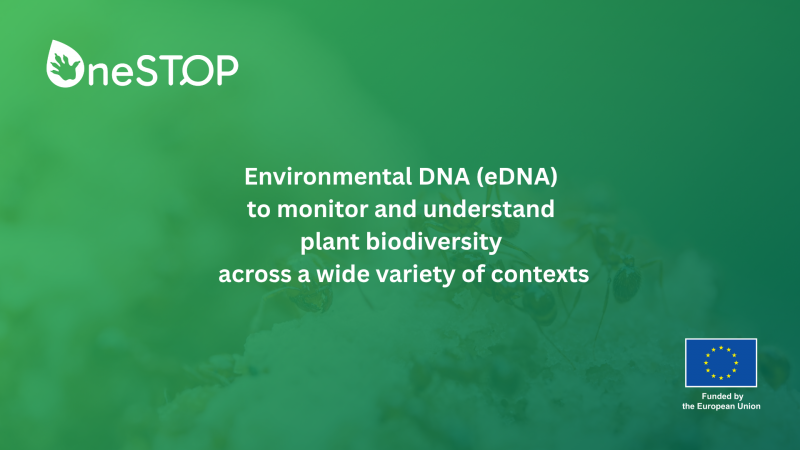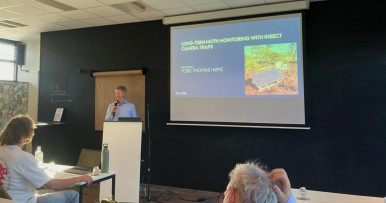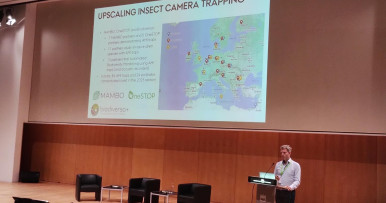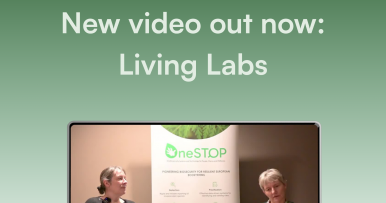Environmental DNA and the future of plant monitoring
Authored by Quentin Groom from Meise Botanic Garden.
OneSTOP’s coordinator, Quentin Groom, had the opportunity to attend the METAPLANTCODE mid-term meeting as a guest, appreciating the chance to follow the discussions and learn more about the project’s ongoing work. The meeting brought together a broad range of contributors, each focused on using environmental DNA (eDNA) to monitor and understand plant biodiversity across a wide variety of contexts, from soils and air to animal diets and commercial products.
One of the key themes emerging from the meeting was the complexity of publishing metabarcoding data in a way that meets the FAIR principles, Findable, Accessible, Interoperable, and Reusable. The datasets being developed within METAPLANTCODE are rich and diverse, but they also come with varied metadata, sampling strategies, and analytical workflows. Despite the diversity of approaches, a shared challenge persists, which is structuring and publishing plant eDNA data in a consistent and standardised way. The project’s commitment to documentation and openness, such as sharing resources via GitHub and preparing datasets for publication through the Global Biodiversity Information Facility is an encouraging sign that the community is serious about making these data discoverable and reusable by others (Frøslev et al. 2023).
Much of the project’s focus lies in generating robust datasets that can be effectively interpreted in ecological and taxonomic contexts. This emphasis on metadata, sampling context, and floristic relevance highlights the importance of interdisciplinary collaboration, between molecular biologists, ecologists, and taxonomists.
The limitations of existing reference datasets were also apparent. In many cases, taxonomic assignment is constrained not by the quality of the sequence data, but by the gaps in barcode coverage and the complexity of plant taxonomy. Improved marker-specific, regionally representative reference libraries will be essential for pushing the limits of species-level identification, particularly in the context of invasive species monitoring and ecosystem diagnostics.
Compared with microbial and aquatic systems, terrestrial plant eDNA poses particular challenges and yet, its complexity is matched by some scientific and applied potential.
Case studies within MetaPlantCode+ are already exploring several promising avenues:
-
Detection of non-native or invasive plants,
-
Monitoring of red-listed plants
-
Analyzing ecological networks (plant pollinator interactions, herbivores diets)
-
Monitoring of ecosystem change from soil eDNA.
-
Monitoring of airborne plant traces, e.g. for medicinal purposes
Realising these possibilities will depend not only on molecular innovation but also on clear data structures, taxonomic accuracy, and thoughtful ecological framing.
A particularly compelling area of innovation linked to METAPLANTCODE is the Air-DNA work also being examined within the OneSTOP project, specifically in WP2. Air-DNA is the collection of trace DNA from plants, fungi, bacteria, and animals from air. It has the potential to revolutionise terrestrial eDNA monitoring in the same way that aquatic eDNA has done for aquatic systems.
OneSTOP is aiming to elevate Air-DNA from a proof-of-concept to an operational demonstration. Working with Platform Kinetics, the project is deploying air samplers capable of capturing biological particles across a wide aerodynamic range. Pilot deployments are planned at five Living Labs across Europe. These samplers could prove very useful for early detection of alien species and large-scale biodiversity surveillance.
METAPLANTCODE is making good progress, assembling a diverse set of use cases and fostering an open, collaborative spirit. It’s encouraging to see this work align with the broader community like OneSTOP, ensuring that data produced today will be reusable, comparable, and informative across contexts and communities. As a guest at the meeting and a member of the project’s external advisory board, Quentin appreciated the opportunity to contribute. The thoughtful discussions and technical ambition on display were a reminder of how far the field has come, and how much potential remains to be unlocked.
Reference
https://metaplantcode.github.io/metaplantcode/index.html
Frøslev TG, Jeppesen TS, Robertson T, Schigel D (2023) eDNA Metabarcoding Data in the Global Biodiversity Information Facility (GBIF). Biodiversity Information Science and Standards 7: e110672. https://doi.org/10.3897/biss.7.110672



